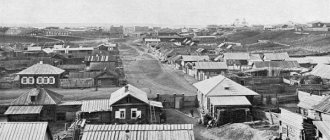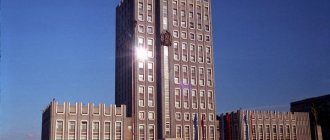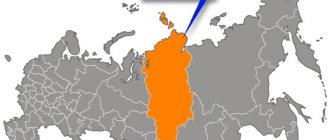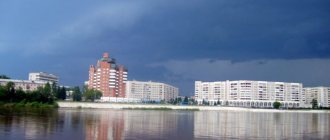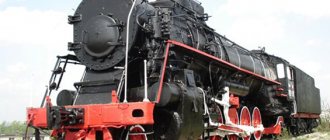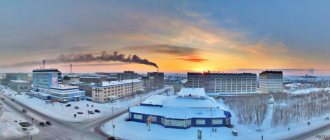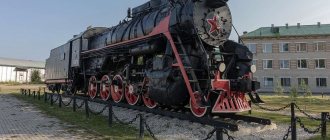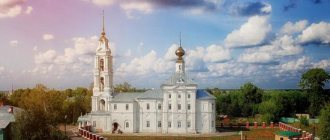The joint project “Small Cities from Great Heights” from Prospekt Mira is moving to the North. This time we decided to visit Lesosibirsk, a city whose life revolves around tall pines and majestic cedars. A city of contrasts, where the unprepossessing decoration of the province serves as a backdrop for the creative life of talented youth and intelligentsia.
Our guides to the woodworking capital of the Krasnoyarsk Territory were local student Daria Novikova and lawyer Olga Vtorykh, who spent her childhood there. And photographer Sergei Filinin showed us the city through the eyes of signalmen - from the heights of cellular masts. 4G mobile internet helped us navigate the city. Let us remind you that we have previously visited Achinsk, Nazarovo, Kansk and Zelenogorsk.
Lesosibirsk is a city stretching for many kilometers along the Yenisei. Long as a gut (this phrase is popular among locals), it takes locals an average hour to get from one end to the other. The only thing that saves us is public transport, which is simply excellent compared to Krasnoyarsk. Buses run on schedule until 1 am in all areas of the city, the buses are clean, and the conductors are polite.
Due to its structure, Lesosibirsk is strictly divided into districts. For example, the Belinsky district is quiet and intelligent, there are universities and a medical college there.
Nearby lies Victory Street - the main place for ostentatious promenades. Buying a new dress and not showing it off at Pobeda means buying it in vain. Whoever does not walk “on Victory” runs the risk of knowing eternal oblivion. In addition, Victory Street is a favorite place for dating.
Another place for walking is the embankment of the Maklakovka River, the historical center of the city. There, on Gorky, 34, there is a monument to the participants of the Yenisei-Maklakov uprising against Kolchak in 1919. And before there was a city beach here.
There are also areas that you definitely shouldn’t go to after dark. For example, Pirogov - dilapidated two-story houses, in which migrants or families with low social responsibility live because of their low cost. Or a new district - Yubileiny. This is social housing, into which people were moved compactly from wooden dormitories throughout the city.
Cities of the Krasnoyarsk Territory
Krasnoyarsk Territory is one of the largest constituent entities of the Russian Federation in terms of area. About three million Russians live here. The region has a developed mining industry, as the region has significant reserves of some minerals. Among them are nickel, cobalt, gold, graphite and others.
In the southern part of this region is the young Lesosibirsk. The Krasnoyarsk Territory is made up of 23 cities with different populations. The most populated from this list are Krasnoyarsk, Norilsk, Kansk, Achinsk and Zheleznogorsk. However, only one of the cities in this region has over one million inhabitants. This is Krasnoyarsk - the administrative center of an entity called Krasnoyarsk Territory.
The city of Lesosibirsk ranks eighth in the region in terms of population. What do its inhabitants do? And what might this small town be of interest to a visiting tourist? Read more about this.
Lesosibirsk, Krasnoyarsk Territory: features of the geographical location of the city
When the decision was made to build a new city in Siberia, on the banks of the Yenisei, there was no need to think long about its name. Indeed, it is difficult to find another city in the vastness of Russia whose residents would be so close to living nature. A clear confirmation of this is his map. Lesosibirsk is located on the left bank of the Yenisei, surrounded by centuries-old taiga forests.
The city has an extremely favorable transport and geographical position. Thus, a railway passes through its territory, connecting the settlement with the Trans-Siberian Railway. The highway, the so-called Yenisei tract, leads to the federal highway “Baikal”. 30 kilometers from the city is the mouth of the Angara River, through which communications with the Lower Angara region are carried out. In Lesosibirsk itself there is a large port that is capable of processing up to one million tons of cargo per year.
The Lesosibirsk residents affectionately call their city Lessobon and are happy to invite all tourists to their place.
Lesosibirsk on the map of Russia, geography, nature and climate
The city is located 295 km north of the capital of the Krasnoyarsk Territory, has approx. 60 thousand inhabitants. It stretches for 25-30 km along the left bank of the Yenisei and is a conglomerate of industrial zones surrounded by residential areas.
The urban district includes the working-class village of Strelka at the confluence of the Angara and the Yenisei (30 km to the south); in the north, the working-class village of Novoyeniseisk adjoins Lesosibirsk.
A satellite map of Lesosibirsk clearly shows that immediately beyond the city’s borders there begins an array of virtually untouched taiga with unique timber, the reserves of which have no analogues in the world. The sharply continental climate is characterized by long winters with frosts up to 50° and hot, dry summers with an average temperature of up to 18°.
Thanks to its favorable geographical and transport location, Lesosibirsk has every chance of becoming a springboard for the development of the Lower Angara region.
History of the forest city
Although Lesosibirsk received city status only in 1975, its biography goes back much deeper into history. So, back in 1640, the village of Maklakov Meadow arose on this site. The name of the village, as historians believe, comes from the word “wet”. The first settlers of Maklakov Luga were engaged in farming, fishing, and hunting.
At the beginning of the 20th century, the first sawmill was built here (by the Norwegian Lid). The products of a small enterprise were even exported. In the 50s, the Soviet government built several large factories in the village of Maklakovo, which were engaged in cutting and processing local wood. In February 1975, a new city was formed from several villages.
Map
| Lesosibirsk: maps |
Lesosibirsk: photo from space (Google Maps) Lesosibirsk: photo from space (Microsoft Virtual Earth)
| Lesosibirsk. Nearest cities. Distances in km. on the map (in brackets along roads) + direction. Using the hyperlink in the distance , you can get the route (information courtesy of the AutoTransInfo website) | |||
| 1 | Yeniseisk | 30 (37) | NW |
| 2 | Pirovskoe | 68 (178) | YU |
| 3 | Kazachinskoe | 76 (110) | SE |
| 4 | Motygino | 129 () | IN |
| 5 | Big Murtagh | 153 (214) | YU |
| 6 | Novobirilyussy | 179 (573) | SW |
| 7 | Taseevo | 182 (679) | SE |
| 8 | Sukhobuzimskoe | 199 (290) | YU |
| 9 | Big Ului | 210 (538) | SW |
| 10 | Cedar | 222 () | YU |
| 11 | Dzerzhinskoe | 225 (629) | SE |
| 12 | Zheleznogorsk | 229 (376) | YU |
| 13 | Yemelyanovo | 230 (343) | YU |
| 14 | North Yenisei | 240 (332) | WITH |
| 15 | Sosnovoborsk | 240 (356) | YU |
| 16 | Kozulka | 240 (429) | YU |
a brief description of
Located in the southwest of the Trans-Angara plateau, on the left bank of the Yenisei, near the mouth of the Angara, 458 km northwest of Krasnoyarsk.
Railway station. Port, transshipment base for cargo from railway to river vessels and back.
Territory (sq. km): 271
Information about the city of Lesosibirsk on the Russian Wikipedia site
Historical sketch
On the site of Lesosibirsk, since 1640 there was a village of Maklakov Lug (named after the surname of the founder). In the 19th century The village of Maklakovo is the center of the volost. In 1915-17 There was a small sawmill.
After the Great Patriotic War of 1941-45, large sawmills were built in the Maklakovo area to process Angara pine into lumber for export, and the workers’ settlements of Novomaklakovo and Novoyeniseisk were built.
In 1975, the city of Lesosibirsk was formed from the villages of Maklakovo (PGT since 1953, 16.3 thousand inhabitants, 1959; 17.2 thousand inhabitants, 1970) and Novomaklakovo (PGT since 1966, 7.8 thousand inhabitants, 1970). .
The name of the city reflects both the specialization of the city and its geographical location.
In 1989, the working settlement of Novoyeniseisk was included within the city limits (PGT since 1962, 11.4 thousand inhabitants, 1970; 15.6 thousand inhabitants, 1979).
Economy
Lesosibirsk is a large center for timber processing.
The leading industries of Lesosibirsk are timber and wood chemicals.
Plants: mast impregnation plant, rosin-extraction plant. Combines: timber transshipment, wood processing, etc.
Main enterprises
FORESTRY, WOOD PROCESSING AND PULP AND PAPER INDUSTRY
OJSC "Lesosibirsk Timber Handling Plant"
663131, Krasnoyarsk Territory, Lesosibirsk,
Offers:
Sawmill products, production of sleepers, timber handling works
WOOD PROCESSING INDUSTRY
CJSC "Lesosibirsk Sawmill and Woodworking Plant N1" (LDK-1)
663131, Krasnoyarsk Territory, Lesosibirsk, st.
Belinskogo, 16 Offers:
sawmill products, production of fiberboard, furniture
CJSC "Maklakovsky Plant"
663131, Krasnoyarsk region, Lesosibirsk, st.
Vosstaniya, 9 Offers:
lumber, sawdust, hydrolytic chips
CJSC "Novoeniseisky LDK"
663131, Krasnoyarsk region, Lesosibirsk, st.
40 Let Oktyabrya, 1 Offers:
Sawmill products, fiberboard production
FOREST CHEMICAL INDUSTRY
OJSC "Lesosibirsk Rosin Extraction Plant"
663132, Krasnoyarsk Territory, Lesosibirsk, st.
Privokzalnaya, 2 Offers:
Wood chemical products, paint and varnish products
Culture, science, education
Pedagogical Institute (branch of Krasnoyarsk University). Branch of the Siberian Technological Institute.
Museum of Forest and Timber.
In Maklakovo in 1903-05. lived in exile P.A. Zalomov, who served as the prototype of Pyotr Vlasov, the hero of M. Gorky’s novel “Mother”.
Universities of the city
Lesosibirsk Pedagogical Institute - branch of the Siberian Federal University
662544, Krasnoyarsk Territory, Lesosibirsk, st. Pobeda, 42
Lesosibirsk branch of the Siberian State Technological University
662543, Krasnoyarsk region, Lesosibirsk, st. Pobeda, 29 WWW: https://www.lfsibgtu.ru/
Lesosibirsk branch of the Modern Humanitarian Academy
662540, Krasnoyarsk region, Lesosibirsk, 5th microdistrict, 5a
Museums, galleries, exhibition halls
Lesosibirsk City Exhibition Hall 662543, Krasnoyarsk Territory, Lesosibirsk, st.
Privokzalnaya, 9 Lesosibirsk Forest Museum 662547, Krasnoyarsk Territory, Lesosibirsk, 9th microdistrict, 14 Telephone(s): (39145) 5-4679
Architecture, sights
The taiga adjoins the southern, western, and eastern quarters of Lesosibirsk. Stacks of wood, lumber and production waste are stored near sawmills.
| Population by year (thousands of inhabitants) | |||||||
| 1979 | 38.6 | 2001 | 68.2 | 2010 | 64.0 | 2016 | 59.8 |
| 1989 | 68.3 | 2003 | 65.4 | 2011 | 61.1 | 2017 | 59.6 |
| 1992 | 69.9 | 2005 | 64.9 | 2012 | 60.9 | 2018 | 59.5 |
| 1996 | 69.7 | 2006 | 64.6 | 2013 | 60.6 | 2019 | 59.4 |
| 1998 | 69.3 | 2007 | 64.4 | 2014 | 60.3 | 2020 | 59.3 |
| 2000 | 68.5 | 2008 | 64.2 | 2015 | 59.9 | 2021 | 58.9 |
Economy and industry
Modern Lesosibirsk stretches along the Yenisei River for almost three dozen kilometers. It consists of several small residential areas connected by one highway. Thanks to Lesosibirsk, it has remained clean and well-groomed for decades. The company has been collecting and processing household waste since 1971.
About 60 thousand people live in the city today. Almost all of them are employed in woodworking and forest chemicals. In modern Lesosibirsk there are 36 operating enterprises. Their products are exported abroad, in particular to Western European countries. Lesosibirsk Wood Processing Plant No. 1 is the country's largest producer of lumber and other wood products.
In Lesosibirsk there are two universities, two vocational schools, a technical school, a museum, a theater, an exhibition hall and five cultural centers.
Lesosibirsk City Drama Theater "Poisk"
Address: st. Pobeda, 6a
Perhaps the residents of Lesosibirsk will never tire of shouting about how wonderful the theater is here. They say that the local “Search” will give even the capital’s theaters a head start.
Competent management and talented actors, collaboration with playwrights and directors from different cities of Russia, the most talented chief director Oleg Hristolyubsky. There is a repertoire for children, classic classics in interesting readings, modern plays, and an interesting, fresh approach to productions. “Poisk” is a place that you should definitely visit if your visit to Lesosibirsk coincides with another performance.
By the way, Lesosibirsk is a unique place where the depressing appearance of a provincial town does not at all fit with the population inhabiting it. Do not forget that there are two universities in the city - the Lesosibirsk Pedagogical Institute and the Lesosibirsk branch of Siberian State University, which means there is a rather impressive layer of intelligentsia and students.
“Once upon a time, I myself was among those “normal youth” who left. I studied at the university in Krasnoyarsk, worked in Krasnoyarsk, and then at 23 I decided to return and now I’m studying at the university in Lesosibirsk,” says Daria Novikova. - I have something to compare with, there are wonderful young people here. I don’t know what’s the matter, but in Lesosibirsk there is a huge percentage of students who are holders of increased scientific scholarships, scholarships from the Government of the Russian Federation, the President of the Russian Federation, Oxford scholarships, sports scholarships and other evidence of their successful studies. Comparing with my first university in Krasnoyarsk, I never cease to be amazed at how motivated the guys here are - they try to get everything out of their studies and invest themselves to the fullest. So Lesosibirsk is no longer about squatting guys in tracksuits drinking beer in the evenings.”
The city's attractions
The blue-green sea of endless taiga here begins right on the outskirts, literally behind residential buildings. Tourists and guests of the city will be interested in visiting the local forest museum, which is located in the 9th microdistrict. Its exhibitions, in a rather unusual form, present the history of human exploration of the middle reaches of the Yenisei, talk about folk crafts and the peculiarities of local wooden architecture.
The city has the largest Orthodox church in all of Siberia! It was built at the end of the 20th century using medieval bricklaying techniques. Next to the temple there is a unique cedar grove. You should definitely take a walk along it - the air there is simply incredible!
There are several more interesting sights in the city of Lesosibirsk. This is the building of a Muslim mosque, a monument to a Siberian partisan, and a city exhibition hall where you can buy beautiful local souvenirs.
Lesosibirsk wood processing plant No. 1 (LDK)
st. Belinsky, 16e
LDK is the leading city-forming enterprise of Lesosibirsk, which to this day depends on the timber industry. This enterprise left an indelible mark on the hearts of children of the 90s. A frightening prospect was laid in the fragile minds: “If you don’t study, you’ll go to the LDK to stack boards!” Anyone who experienced a bright childhood in Lesosibirsk knows this phrase.
By the way, LDK was a source of bright events. The wood processing plant often brought rafts ashore to float the wood. And local children used them for fun. The fun could have disastrous consequences: someone almost had their leg torn off, someone fell from the raft straight into the cold river. But in the era of no Internet, rafts were the main children's entertainment in this city.
The Lesosibirsk forest is an integral part of the city landscape. Within the city there is a relict forest, which is a natural monument. Residents of Krasnoyarsk high-rise buildings can only dream of this. But in addition to the obvious advantages, this is a source of annoying inconvenience. And the main ones are mosquitoes and midges, and their names are legion. In the summer in Lesosibirsk, everyone wears the same perfume - mosquito spray.
Therefore, everyone who does not want to go to feed on mosquitoes can visit the forest museum.
